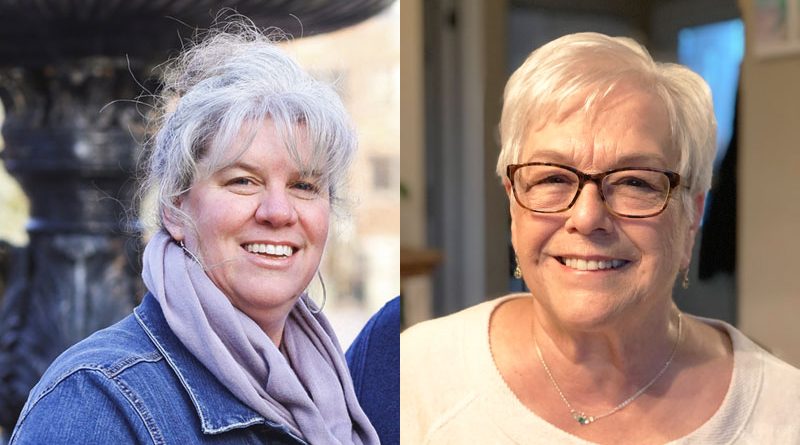Going Gray
Are you for it or against it?
By Tami Scott
If you’re the type of person who follows trends, then you know gray hair is en vogue now more than ever. Celebrities like Lady Gaga, Jennifer Lawrence and Pink have all tried the silver hue, and then there’s Meryl Streep, Diane Keaton and Jamie Lee Curtis keepin’ it real — and looking good, too!
Going gray, however, is not as easy as it might seem — be it by bottle or naturally grown. And it may or may not be for you, no matter the current craze.
“Most of my clients panic when they start to see their gray hair coming in!” said Tracy Reagan-Isbell, a hairstylist at The Unique Hair Machine in Baldwinsville. “Most in the age range between 50 and 65 are still not ready to go all gray.”
But there are exceptions, and Jenn Chapman, of Manlius, is one of them. She decided to stop highlighting her hair in her mid-30s when she first started showing signs of gray hair. She never liked the idea of trying to cover it only to have it grow and show again in three weeks time. So instead of resisting the natural progression of age, she embraced it. And as a mom of three, Chapman says it wasn’t worth the money, either.
“It just seemed to be an expense that was not necessary,” she said, adding she’s been mostly gray for eight years now.
Unlike Chapman, Sharon Grady had just begun to color her hair at age 35. Her trips to the salon were consistent — every four weeks. Though she was a natural brunette, she’d dye her hair blonder and blonder to hide the gray longer. And each trip was another $100 out of her pocket. The now 76-year-old Westvale resident decided to go natural just last year.
“At first, I scared myself when I looked in the mirror, asking, ‘Who is this white-headed person?’” said Grady, whose hair she describes as more of a silvery white than gray. “I am very happy with my decision. My hair is healthier and it’s kind of a free feeling.”
Grady’s friend, Donna Ruth, 75, colored her hair into her 50s, but personal circumstances made it difficult to keep up with the appointments, or even primping at home. So Ruth, who lives in Liverpool, really didn’t have an option. She keeps her salt-and-pepper hair short and says many people, friends and strangers alike, compliment her natural style.
“This is a personal choice for women; some look great with covering the gray — some do not,” Ruth said. “We all have different features and hair, so sometimes it’s not in your best interest to color. By going natural, a professional will be able to give you the best advice for caring for natural gray or white hair.”
Going all gray is a gradual process, and hairstylists can help clients achieve the look they want, and advise how best to take care of their hair.
Marian Kramer, owner of Hair & Body Center in Liverpool, says going gray can be beautiful, but can take a long time to get there, especially if growing out color-treated hair. Her advice is to try wearing a shorter hairstyle if you don’t already.
Reagan-Isbell said sometimes, depending on their type of hair, clients can also begin with some foils of platinum to blend in with the gray. This is an option, too, for women who may not be ready to accept the full-on gray look just yet. For many, they’re still willing to pay the price for a more youthful appearance.
“I think going natural as you age is a state of mind,” she said.
As for the trend … “I had a young gentleman tell me that friends his age are paying to have their hair dyed the color of mine,” Grady said.
Words of wisdom? Patience. That’s all it takes for a fad that keeps on growing.
Photo: Left: Jenn Chapman of Manlius decided to stop highlighting her hair in her mid-30s when she first started showing signs of gray hair. Right: Sharon Grady started to color her hair at age 35. Eventually, she decided against it. “My hair is healthier and it’s kind of a free feeling.”

